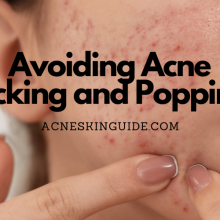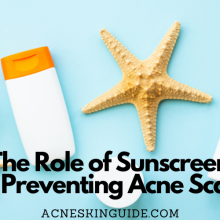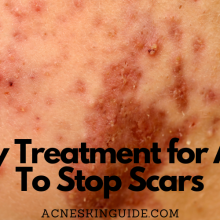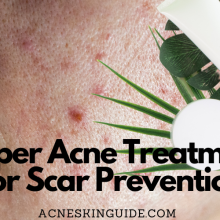How to Prevent Acne Scars | Acne Skin Guide
Acne scarring can severely impact one’s appearance and self-confidence, but it is preventable with the right strategies. The key is understanding how scars form during the skin’s healing process after acne clears. Prevention starts by addressing active breakouts promptly with professional treatments, avoiding trauma to the skin, and following a consistent skincare routine. Depressed atrophic scars may benefit from laser resurfacing or microneedling, while raised keloid scars require treatments that minimize collagen overproduction.
Brightening agents and sunscreen can fade post-acne hyperpigmentation. An individualized approach is crucial, tailoring treatments to factors like skin tone and scar types. For severe cases, professional procedures like PRP microneedling, lasers, fillers or surgery may be needed. While scar revision has limitations, being proactive with acne care, nurturing wound healing, and using innovative scar treatments can minimize acne’s lasting marks.
#1 Recommended Acne Treatment | #2 Recommended Acne Treatment |
 |  |

Acne Scar Prevention: The Ultimate Guide
For many, acne is an unfortunate rite of passage during adolescence and early adulthood. But the real struggle often begins after the blemishes have cleared – dealing with the lingering scars left behind. Acne scarring can have a major impact on one’s appearance and self-confidence. However, with the right prevention strategies and treatments, you can minimize the long-term effects of this common skin condition.
The Science of Scar Formation
Before we dive into prevention, it’s important to understand how acne scars develop in the first place. When acne clears, it leaves behind areas of damaged skin. How the skin repairs itself during this healing process determines the type and severity of potential scarring.
Depressed or atrophic scars like icepick, boxcar, and rolling scars occur when there is a loss of tissue. Raised hypertrophic and keloid scars are caused by an overproduction of collagen during wound healing. Post-inflammatory hyperpigmentation is another common concern, leaving behind dark spots or patches.
Preventing Acne Before It Starts
Of course, the best way to prevent acne scars is to stop breakouts before they even begin. Good hygiene, using non-comedogenic products, managing hormones, reducing stress, and following a consistent skincare routine can all help keep pores clear and skin healthy.
For existing acne, prompt professional treatment is key. Dermatologists can prescribe topical retinoids, antibiotics, or other medications to quickly bring flare-ups under control. Avoid picking or popping pimples, as this can worsen acne and increase scarring risk. Sun protection is also essential to prevent further skin discoloration.
Treating Atrophic Acne Scars
If depressed scars have already formed, there are several treatment options to restore smoothness:
- Laser resurfacing removes outer layers of skin to stimulate new collagen production and cell turnover.
- Microneedling creates micro-injuries in the skin to trigger a wound healing response and collagen remodeling.
- Dermal fillers can “fill in” deeper scars for a smoother appearance.
- Chemical peels accelerate cell turnover to improve texture.
- At-home treatments like over-the-counter retinoids, vitamin C, or silicone gels/sheets may help reduce the appearance of shallow scars over time.
Preventing Raised Scars
Hypertrophic and keloid scars require a different treatment approach focused on minimizing collagen overproduction. Preventative measures include:
- Using silicone sheets/gels to flatten and soften raised scars
- Injecting corticosteroids to reduce inflammation and collagen synthesis
- Trying natural remedies like onion extract gels or products with vitamin E
- Considering cryotherapy (freezing) or laser treatments to break down excess scar tissue
Risks factors like skin tone, personal/family history of keloids, and body location can increase one’s chances of developing raised scars. If susceptible, extra precautions during wound care are crucial.
Fading Hyperpigmentation
To prevent and treat post-acne dark spots or hyperpigmentation:
- Use brightening agents like vitamin C, kojic acid, licorice root, etc.
- Try professional chemical peels to accelerate skin cell turnover
- Protect healed skin with broad spectrum sunscreen daily
- Consider laser treatments for stubborn pigmentation
An Individualized Skincare Plan
No two cases of acne scarring are exactly alike, which is why an individualized treatment approach is so important. Factors like skin tone, scar types, and acne severity must be taken into account.
For example, laser treatments may need to be adjusted for higher risk of hyperpigmentation in darker skin tones. Or those prone to keloids may need lower concentrations of certain active ingredients to avoid irritation.
A consistent, gentle skincare routine tailored to your specific needs can help nurture skin back to health while preventing further damage. Look for formulations fortified with proven scar-fading ingredients like retinoids, vitamin C, niacinamide and hydrating ceramides.
When to Seek Professional Help
Home care and over-the-counter products can be effective for mild scarring. But for severe, widespread, or treatment-resistant scarring, professional procedures may be required.
New treatments like microneedling with PRP (platelet-rich plasma), lasers that target pigmentation like the PiQo4, and advanced dermal fillers are frontrunners in the battle against acne scars. Some more invasive options like subscision (releasing tethers under scars), punch grafting, or excision with skin grafts may also be recommended for deeper scars.
The Psychological Impact
It’s important to address not just the physical effects of acne scarring, but the emotional toll as well. Scarring can chip away at self-esteem, making those affected feel self-conscious in social situations. Support groups, counseling and simply practicing self-love can help cope with the psychological distress.
Embracing Your Scars
No acne scar removal treatment is 100% perfect, and some level of scarring may always remain. Choosing to see these “imperfections” as a part of your personal journey and story is empowering. While prevention and treatment can make a significant difference, self-acceptance is also key.
The Downsides and Limitations
While this guide aims to provide comprehensive information on acne scar prevention, it’s important to note some potential downsides and limitations:
- Many treatments like laser resurfacing and deep chemical peels carry risks like post-inflammatory hyperpigmentation, especially in darker skin tones if not performed properly.
- Some at-home remedies may cause skin irritation or adverse effects if not used carefully.
- Results from scar treatments are not always permanent, and maintenance may be required over time.
- More invasive procedures like surgery come with longer recovery times and potential complications.
- Professional treatments supervised by a dermatologist can be quite costly.
Patience and realistic expectations are essential when undergoing any type of scar revision. The path to clearer, smoother skin can be a long journey.
Early, Proactive Care is Key
The bottom line when it comes to preventing acne scar formation? Be proactive, consistent, and persistent with treatment. From practicing good skincare habits to addressing every acne flare-up promptly, minimizing trauma to the skin is crucial.
By taking a multi-faceted approach to prevention, nurturing the wound healing process, and utilizing the latest innovations in scar care, you can improve your chances of leaving acne’s lasting marks behind. Implementing these comprehensive strategies now can save you from dealing with difficult-to-treat scars down the road.
#1 Recommended Acne Treatment | #2 Recommended Acne Treatment |
 |  |
Summary and FAQs
Is it possible to prevent acne scars if I have a family history of keloids or severe scarring?
Yes, it is possible to prevent acne scars even if you have a family history of keloids or severe scarring, but it may require extra precautions and diligence. Here are some tips:
- Seek early treatment for acne: The sooner you start treating acne breakouts, the lower the risk of scarring. Don’t wait for lesions to become inflamed or pop on their own.
- Be very gentle with active acne: Avoid picking, squeezing, or traumatizing acne lesions as this can increase inflammation and scarring risk. Let them heal on their own.
- Use silicone scar sheets/gels: As soon as a acne lesion starts healing, apply silicone sheets or gels to help flatten and soften any potential raised scars.
- Consider preventative treatments: Your dermatologist may recommend injections of corticosteroids or other preventative treatments around healed acne to suppress keloid formation.
- Protect healed skin: Always use sunscreen on post-acne marks to prevent hyperpigmentation, which can worsen the appearance of scars.
- Explore laser treatments: Certain laser procedures can help remodel raised scars if they do develop, making them smoother over time.
While you may be predisposed, being proactive with acne care and scar prevention measures can still minimize the development of severe scarring. Working closely with a dermatologist is recommended if you have this family history.
Can dietary changes or supplements help prevent acne scarring?
Yes, dietary changes and certain supplements may help prevent and minimize acne scarring, though more research is still needed in this area. Here are some potential benefits:
Omega-3 Fatty Acids
Foods like fatty fish, walnuts, flaxseeds are rich in omega-3s which have anti-inflammatory properties. This can help reduce inflammation and promote better wound healing after acne clears up.
Antioxidants
A diet high in antioxidants from fruits, vegetables, green tea etc. provides nutrients like vitamins A, C, E that are beneficial for skin health and wound repair.
Zinc
Zinc is involved in wound healing and immune function. Supplementing with zinc may help prevent acne and the subsequent scarring. Good dietary sources include oysters, meat, eggs.
Vitamin C
In addition to antioxidant benefits, vitamin C is required for collagen production which is key for proper scar healing and preventing atrophic scars.
Protein
Adequate protein from lean meats, legumes, nuts etc. provides amino acids needed for tissue repair and skin rejuvenation after inflammatory acne.
While not a substitute for medical acne treatment, incorporating these nutrients as part of an overall balanced diet may provide extra support to prevent acne scar formation. However, always check with a dermatologist before starting any supplements.
How can I cover up acne scars while undergoing treatment?
There are several options to help camouflage or cover up acne scars while you are undergoing treatment:
- Color Correcting Makeup
Using green-tinted color correcting concealers or primers can help neutralize the reddish-purple tones of acne scars. Follow with a full-coverage foundation or concealer matched to your skin tone. - Scar Camouflage Products
There are specialized camouflage makeup products made specifically for covering scars, like Dermacolor or Covermark. These are highly pigmented and long-wearing. - Pore Fillers/Blurring Products
Primers and serums with blurring, pore-filling properties can help smooth over textured scars temporarily. Look for silicone-based formulas. - Scar Patches
Hydrocolloid dressing patches not only protect scars, but also provide a smooth surface to apply makeup over indented scars. - Cosmetic Tattooing
For more permanent camouflage, cosmetic tattooing or medical micropigmentation can apply skin-tone pigments into scar tissue. - Makeup Setting Sprays
Using a makeup setting spray can help the coverage last longer and prevent transferring or fading throughout the day.
Be gentle when applying and removing makeup over healing scars. Also allow fresh scars to fully close before applying any coverage products. With some creativity, you can minimize the appearance of acne scars while treatments have time to work.
At what age is it best to start acne scar prevention and revision treatments?
There is no definitive “best” age to start acne scar prevention and revision treatments, as it can vary based on the individual’s skin condition and severity of scarring. However, here are some general guidelines:
Teens/Adolescents:
For mild to moderate acne scarring in teens, prevention should start as soon as active acne appears. This includes:
- Using proper skincare and acne treatments to avoid picking/popping
- Gentle chemical peels or microneedling may be options
Early 20s:
If significant scarring develops after teenage years, more intensive treatments can begin in the early 20s once the skin matures. Treatments like:
- Deeper chemical peels
- Laser resurfacing
- Dermal fillers
- Subscision for rolling scars
Mid 20s to 30s:
This is often an ideal age range to really address lingering acne scars, as the skin is still able to remodel collagen well. More aggressive treatments like:
- Fractionated CO2 lasers
- RF microneedling
- Punch excisions
- Scar revisions
40s and Beyond:
Scar revision treatments can still be pursued later in life, but the skin’s remodeling ability slows, so results may be more limited. Lower downtimes and non-ablative procedures are often recommended.
The key is to start prevention early when acne first appears, and then be proactive about revision treatments once the skin is fully mature, around the mid-20s. But it’s never too late to improve the appearance of acne scars at any age.
What are the most cutting-edge or experimental acne scar treatments on the horizon?
There are several cutting-edge and experimental acne scar treatments currently being researched and developed that show promising results:
- Stem Cell Therapy
Using stem cells derived from the patient’s own body fat or bone marrow, this treatment aims to regenerate healthy new skin cells to improve depressed acne scars. Early studies show potential for collagen remodeling. - Microneedling with Growth Factors
Going beyond just microneedling alone, this technique combines microneedling with application of growth factor serums like platelet-rich plasma (PRP) or specialized peptides to enhance wound healing. - Scar Remodeling Injections
Injectable treatments like the experimental drug candidate ELNYx help remodel abnormal scar collagen and elastin to improve the appearance of raised scars. - Anti-Scarring Silicone Microspheres
These microscopic silicone particles can be injected or applied topically to release anti-inflammatory medication directly into scars over time. - Laser-Assisted Topical Drug Delivery
Technologies like the P.L.E.A.S.E. Professional allow laser energy to drive topical scar gels and creams deeper into the skin for better results.
While many are still in clinical trial phases, these futuristic treatments could revolutionize acne scar prevention and treatment in the coming years as research progresses. Combining multiple modalities may provide optimal scar remodeling outcomes.
Of course, safety, effectiveness and potential side effects still need further study. But the future of acne scarring solutions looks bright with these innovative therapies on the horizon.






